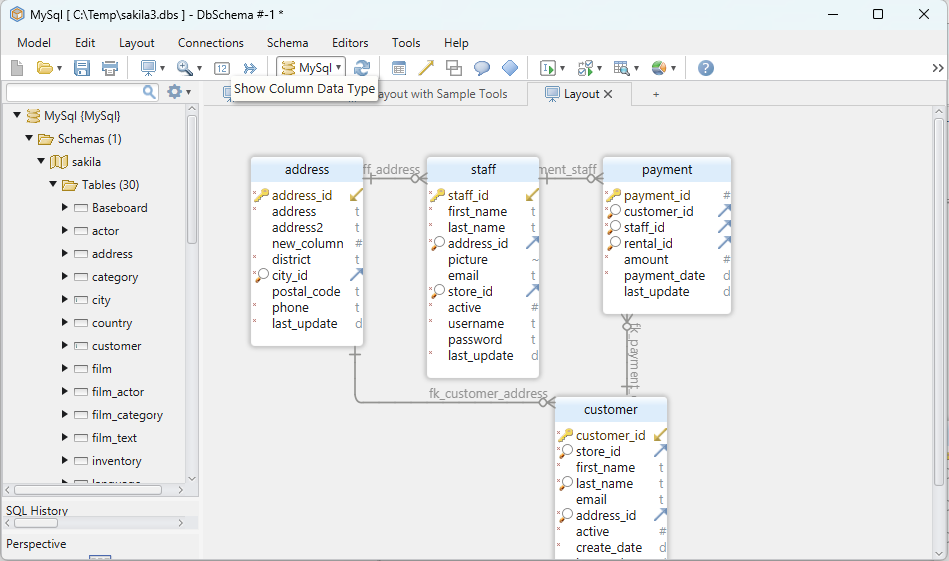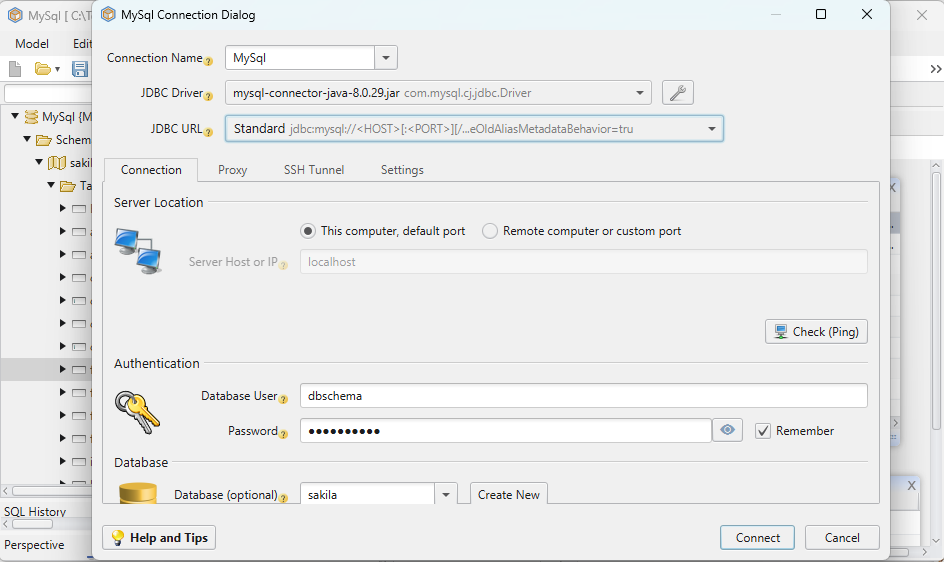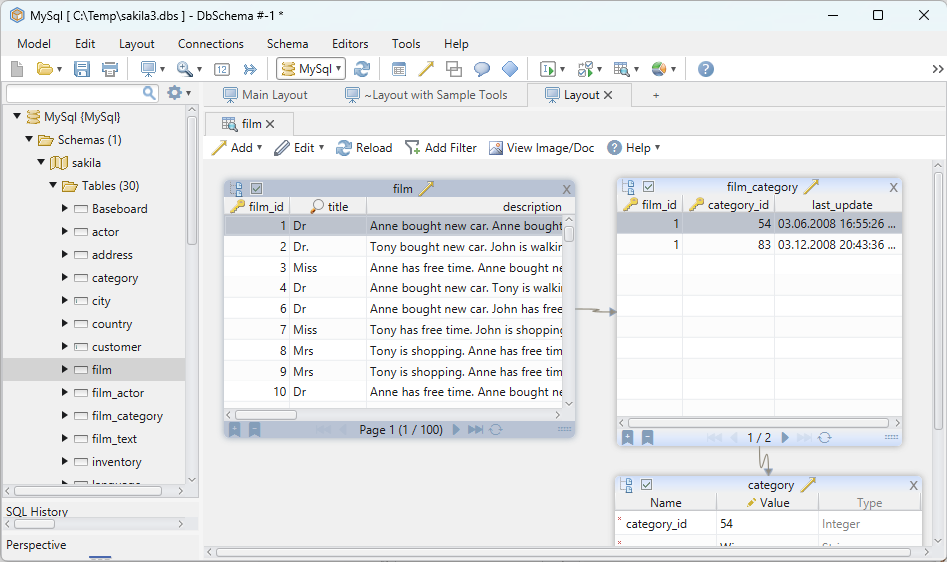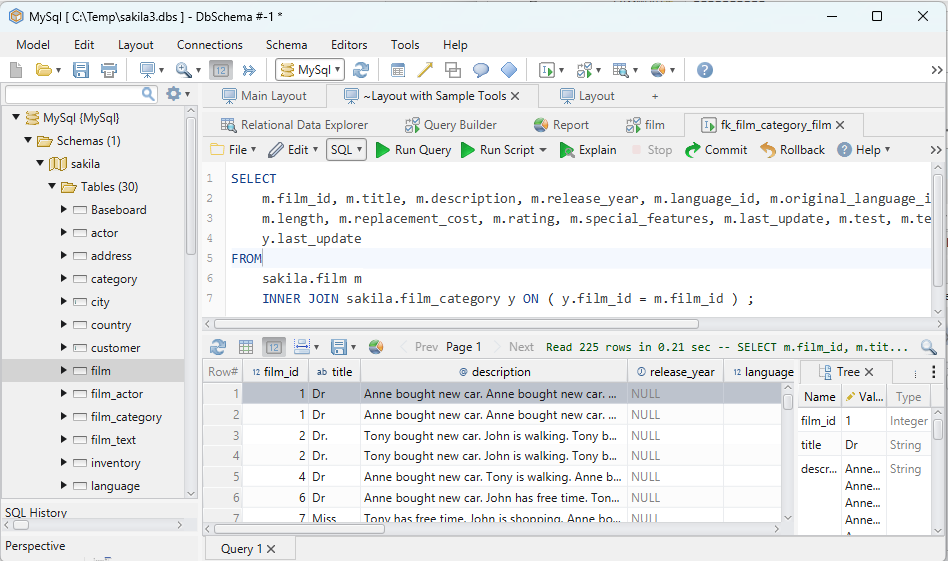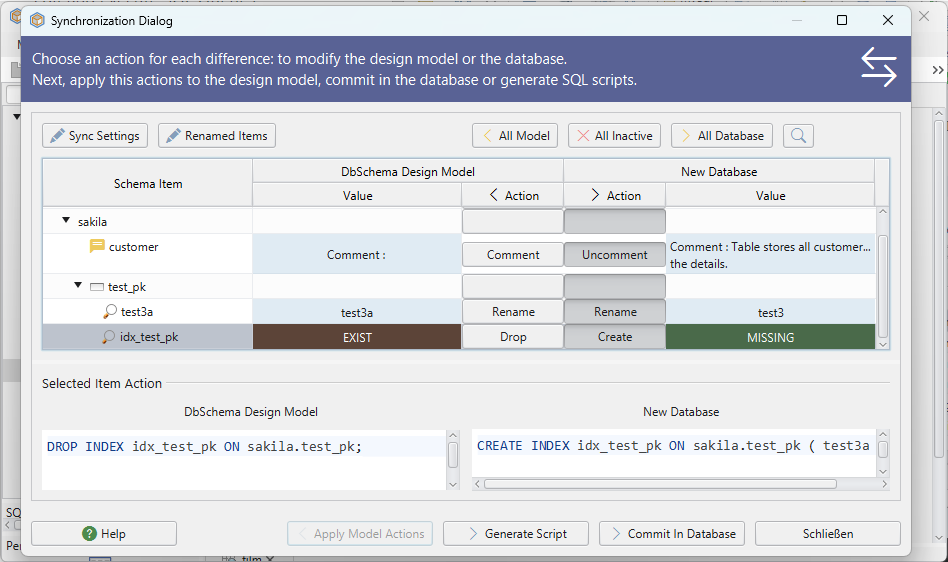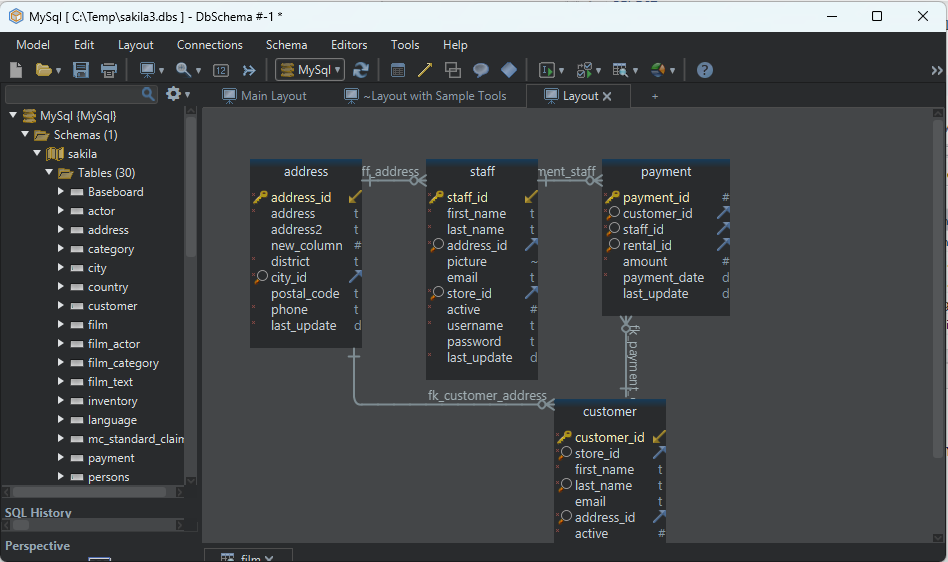
DbSchema | SQLite - How to Use UNION Clause?

Table of Contents
- Introduction
- Prerequisites
- UNION Clause
- Advantages and Limitations of UNION Clause
- Restrictions on UNION Clause
- Difference between UNION Clause and UNION ALL Clause
- Implementing UNION in sqlite3
- Implementing UNION in DbSchema
- Conclusion
- References
Introduction
SQLite is a widely used __relational database management system that employs SQL (Structured Query Language). This __article explores the use of the __UNION clause in SQLite, specifically within the __sqlite3 and __DbSchema environments. The __UNION operator allows the combination of two or more __SELECT` statements into a single result set, providing that each SELECT statement contains the same number of columns and similar data types.
Prerequisites
Before you proceed, ensure that you have:
- __SQLite` installed on your machine. You can download it from the official SQLite website.
- __DbSchema` installed. Download it from the DbSchema website.
- Basic knowledge of __SQL` syntax.
For installation and establishing connection you can read our article SQLite-How to create a database?
UNION Clause
In SQLite, the __UNION clause __combines the result sets of two or more __SELECT statements into a single result set. The __UNION operator removes duplicate rows from the result.
Advantages and Limitations of UNION Clause
Advantages
- It allows the __combination
of results from multiple SELECT statements into a single __comprehensiveresult. - It __removes
duplicate entries, ensuring that the final result is __unique.
Limitations
- The UNION operator can be __slower
compared to individual SELECT statements, especially on large datasets, because it needs to remove __duplicateentries. - All __SELECT
statements within the __UNIONmust have the __same number of columns` and corresponding data types.
Restrictions on UNION Clause
- The number of columns and their __data types
must be the same in all the SELECT statements being __united. - The column names in the __result set
are usually determined by the column names in the first __SELECTstatement.
Difference between UNION Clause and UNION ALL Clause

| UNION Clause | UNION ALL Clause |
|---|---|
| Removes duplicate rows from the result. | Does not remove duplicate rows from the result. |
| May be slower due to the process of removing duplicates. | Faster, as it does not need to process removing duplicates. |

Implementing UNION in sqlite3
Here’s how you can implement the UNION operator in sqlite3:
Step 1: Install sqlite3
If you haven’t already, you need to install sqlite3 on your machine. You can download it from the official SQLite website.
Step 2: Start sqlite3
To start sqlite3, open your terminal and type __sqlite3`. You will then see the sqlite3 command-line interface.
sqlite3
Step 3: Create a New Database
To create a new database, type the following command:
.open sampleDB.db
To know more about creating a database you can read our article SQLite-How to create a database?
Step 4: Create the Tables and Insert Data
Next, let’s create two tables, __Employees and __Contractors, and insert some data into them.
CREATE TABLE Employees (
id INTEGER PRIMARY KEY,
name TEXT,
department TEXT
);
INSERT INTO Employees (name, department) VALUES
('John Doe', 'Sales'),
('Jane Doe', 'Marketing');
CREATE TABLE Contractors (
id INTEGER PRIMARY KEY,
name TEXT,
department TEXT
);
INSERT INTO Contractors (name, department) VALUES
('Mark Smith', 'Sales'),
('Jane Smith', 'Marketing');
To know more about creating a table you can read our article SQLite-How to create a Table?
Step 5: Implement UNION
Now that we have some data in our tables, we can implement the UNION operator.
SELECT name, department FROM Employees
UNION
SELECT name, department FROM Contractors;
Sample Database:
Employees Table:
| name | department |
|---|---|
| __John Doe` | Sales |
| __Jane Doe` | Marketing |
Contractors Table:
| name | department |
|---|---|
| __Mark Smith` | Sales |
| __Jane Smith` | Marketing |
Results:
Following result will be obtained after executing UNION Clause:
| name | department |
|---|---|
| __John Doe` | Sales |
| __Jane Doe` | Marketing |
| __Mark Smith` | Sales |
| __Jane Smith` | Marketing |
Step 6: Implement UNION ALL
Now we will implement UNION ALL clause on our sample database.
SELECT name, department FROM Employees
UNION ALL
SELECT name, department FROM Contractors;
Results:
Following result will be obtained after executing __UNION ALL` Clause:
| name | department |
|---|---|
| __John Doe` | Sales |
| __Jane Doe` | Marketing |
| __Mark Smith` | Sales |
| __Jane Smith` | Marketing |
Notice that if there were __duplicate` records between the Employees and Contractors tables, UNION ALL would have included them in the result.
Implementing UNION in DbSchema
Step 1: Install DbSchema
If you haven’t already, you need to install DbSchema on your machine. You can download it from the official DbSchema website.
Step 2: Connect to Your SQLite Database
After you open DbSchema, you need to connect it to your SQLite database. You can do this by clicking on __Connect to database` and filling in the necessary details.
Step 3: Create the Tables and Insert Data
Next, let’s create the __Employees and __Contractors tables and insert some data into them. You can do this in the ‘SQL Editor’.
To know more about creating a table you can read our article SQLite-How to create a Table?
Step 4: Implement UNION
Finally, we can implement the UNION operator. You can do this in the __SQL Editor` as well.
SELECT name, department FROM Employees
UNION
SELECT name, department FROM Contractors;
After you run the query, you can see the results in the ‘Query Results’ tab.
Visually Manage SQLite using DbSchema
DbSchema is a __SQLite client and __visual designer. DbSchema has a free Community Edition, which can be downloaded here.
Key Features of DbSchema:
Following are the key features of DbSchema which distinguish it from other database GUI tools.
Conclusion
The __UNION operator is a powerful tool in SQL that allows you to __combine the results of multiple __SELECT statements. However, it does have certain limitations and should be used carefully. While the __implementation of the UNION operator is pretty standard across different SQL environments, the specific way to do it may vary __slightly`.
